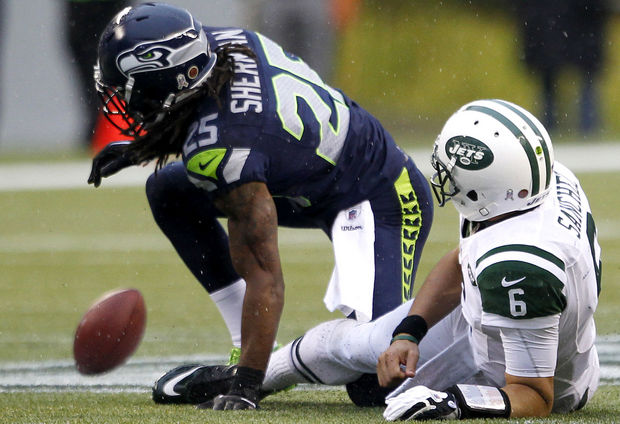DSA’s Tony DiFrancisco noted Monday that every player in Chip Kelly’s first two recruiting classes has been eligible and enrolled on time. That’s a remarkable record, and it speaks to the character and intelligence of the athletes, and the thoroughness and integrity of Oregon’s evaluation process.
On Monday Duck fans got more of this encouraging news, when this year’s class of newcomers arrived intact, particularly wide receivers Rahsaan Vaughn and B.J. Kelley, the only incoming players who had not participated summer session and voluntary workouts. As late as Saturday there some questions about Vaughn. A transfer from San Mateo junior college, his name hadn’t appeared on Oregon’s online student registry and there murmurs of doubt about his arrival or eligibility.
Vaughn showed up in a big way on Monday.
The sleek, fleet-footed 6-2, 195-pounder demonstrated the hands, speed and route-running ability that had Duck fans going crazy on message boards over the winter, catching a long streak pattern down the sideline from Bryan Bennett, ranging high to grab a pass over the middle He’s fluid. Playing in a run-first offense in jc ball he caught 60 balls for a 1,000 yards, named team mvp and the number one jc wide receiver in the country. In his highlight film he flashes some rare talent and game-breaking ability, and if he continues to stand out in practice and buys in to Scott Frost’s “no block, no rock” philosophy, Oregon’s new number 10 could have the biggest impact at wide receiver since James Finley in 2005. He plays physically and runs hard after the catch.
It’s crucial that Vaughn or one of the fabulous three freshmen assert themselves at wideout, because the Ducks have to replace 114 receptions and over 1500 yards from Jeff Maehl and Drew Davis, two graduated seniors. That’s a lot of production, but it’s more than that. Without a credible threat at wide receiver in the spread offense, there is no spread. Safeties and cornerbacks can creep up and pinch in to help force the run. The Ducks need those bubble screens and four verticals to punish defenses that overcommit to stopping the zone read. Speed stretches defenses, and Oregon speed usually breaks them. The Ducks led the country last year in offensive touchdown drives of three plays or fewer and in offensive touchdown drives of two minutes or fewer. The key to that explosiveness is balance and multiplicity of weapons, and Vaughn has the potential to be a big weapon.
His quick acclimation may give the Ducks the luxury of redshirting two or three of the speedy freshman, giving them time to fill out and adjust to college ball. Oregon hasn’t had a true deep threat at wideout since Samie Parker, and now they look to have several over the next few years, a pretty exciting prospect when you consider the strong-armed quarterbacks they’ve recruited behind Darron Thomas. Vaughn’s arrival and strong start is the best early story of fall camp, because it may answer one of Oregon’s critical questions.
But even if Vaughn becomes a legitimate outside threat, he’s only part of the answer. The Ducks can’t and probably shouldn’t try to replace Jeff Maehl with one guy. The other part of the equation is tight end David Paulson. The 6-4, 241-lb. senior was Oregon’s leader in average last year with 17.4 yards per reception, 24 catches in all, four touchdowns. Paulson is a big, reliable target with the best hands on the team. Expect his production to go up in his senior year, which will also create more seams for his fast, slender buddies on the wing.
One further note about the first practice reports: the players are in shorts and helmets as mandated by the NCAA, which requires that the first two practices be noncontact. The kids are just running around and getting acclimated. It’s valuable, but real football starts when they put on pads. That when we’ll have the first true read on the newcomers and their readiness for big boy football.
Add The Sports Daily to your Google News Feed!
